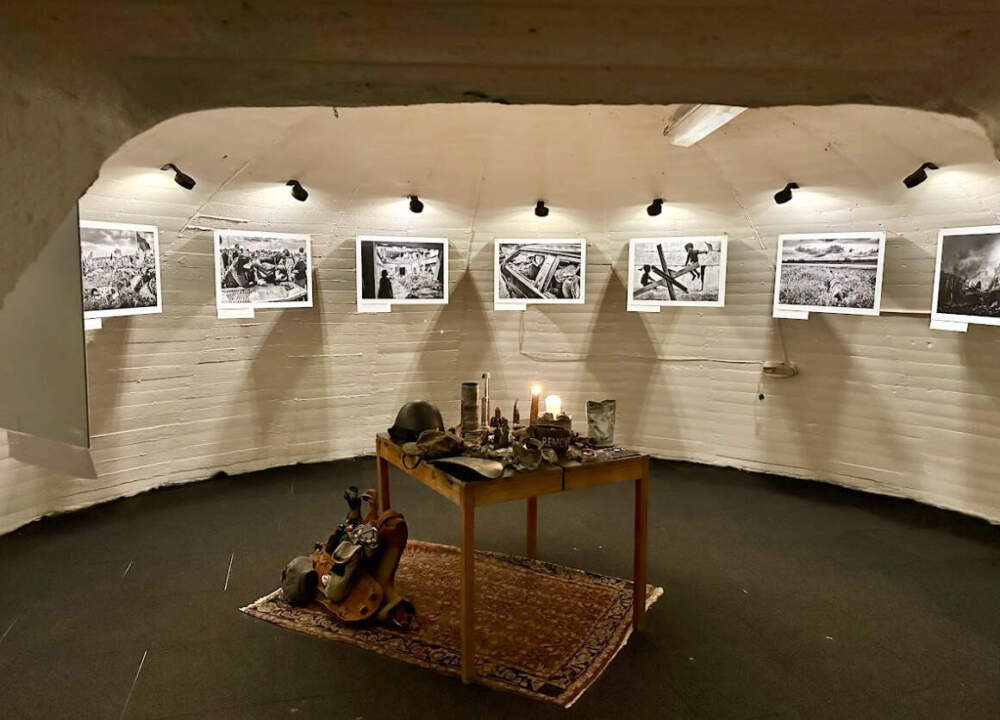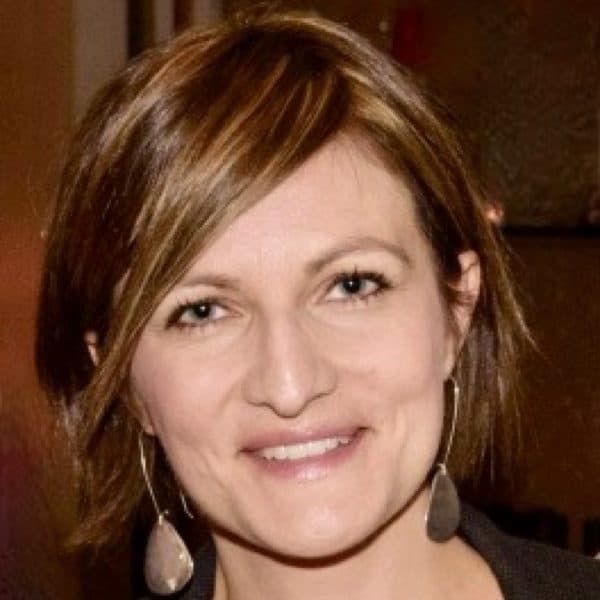Advertisement
Commentary
For Ukrainians, it's been 1,000-plus days of life underground

My Ukrainian neighbor, who I’ll call Nadia, didn’t want to mark last month’s three-year “anniversary” of Russia’s full-scale invasion of her home country.
Nadia fled Kiyv with her husband and two young daughters shortly before Putin attacked her homeland on February 24, 2022. Now, they live in an apartment across the street from me outside of Boston. They chose our street in part because my Ukrainian-born neighbor has a large blue and yellow flag on his porch, marking our neighborhood as a hospitable place for Ukrainian refugees to land.
When he told Nadia that I am originally from Moscow, her body tensed visibly. It was not until I explained my political views — and the fact that my great-grandmother was born in what is now a Ukrainian war zone — that her shoulders relaxed. Since then, Nadia and I have always spoken in English, because Russian now feels terrible on many Ukrainians’ lips.
Over coffee a couple of weeks ago, after noting how lucky we are to be able to walk to a cafe in peace, Nadia told me that despite not wanting to count the years or war, she understands the importance of taking any occasion to bring the atrocities to the surface. In a relentless news cycle, it worries her when Ukraine disappears from the headlines.
[P]oliticians and the media often seem to disregard what 1,000-plus days of war have meant for the 38 million people in Ukraine, Europe’s second-largest country by area.
Last week, the world watched as Ukrainian President Volodymyr Zelensky’s meeting with President Trump and Vice President Vance went completely off the rails. This week, the situation went from bad to dire when Trump decided to halt military aid to Ukraine.
The sweeping geopolitical implications of America’s reversal have dominated the news media. But politicians and the media often seem to disregard what 1,000-plus days of war have meant for the 38 million people in Ukraine, Europe’s second-largest country by area.
For me, that reality came into sharp relief when I visited a photography exhibit in a repurposed bunker in Copenhagen over the December holidays.
The exhibit was put up by Danish photographer Jan Grarup, who spent more than 140 days in the war zone and planned to return soon after showing his work — “1,000 Days of War – Don’t Forget Ukraine” — to as many visitors as he could attract to his terrifyingly suitable venue.
Advertisement
Grarup told me there are 600 bunkers in Copenhagen and 20,000 throughout Denmark. They are lingering relics of human fear dotting a peaceful nation, known as one of the happiest on earth. The dichotomy was jarring.
One of Grarup’s photographs showed Ukrainians sleeping on the floor of an underground metro station-turned-makeshift-bunker. The advertisement for an online marketplace pasted on a metro column read, in Ukrainian: “Click on what you want.” There is no end to the dark ironies of war.
I was visiting Copenhagen with my family, and my 13-year-old daughter joined me at Grarup’s exhibit. Whenever our paths crossed as we wandered through the rooms, we searched each other’s faces, trying to gauge how the other was taking it, and to make sense of the surrealism of visiting a dark underworld we typically glimpse only on our screens.
Grarup had placed tables in the center of each bunker room, arranging each one with lit candles and items he collected on his trips: war helmets, unidentifiable, twisted pieces of metal. A backpack full of gear leaned against one of the table’s feet.
We saw graphic images of dead and injured bodies, a devastated mother over the coffin of one of her dead twin girls, a woman with a forehead scar that will never fade. The injured woman’s gaze so reminded me of my godmother’s daughter, back in Moscow, that I did a double take.

We saw Grarup’s bunker exhibition two months ago, but his work has stayed with me. I keep trying to imagine what it would be like to live in such a small, dark space, with the 100 people it was designed to accommodate.
What is it like for Zelensky, I’ve wondered, to sit in ornate office after office, American or European, while his people shelter in place beneath Russia’s air raids?
Save the Children reported that children in Ukraine hid underground for an average of about 920 hours during the first year of the war, or over one month. More recent statistics have been difficult to find, but we know Ukrainian soldiers and civilians alike are still spending a lot of time in subterranean shelters.
To adapt to Russia’s bombardment, and give children some semblance of a normal life, Ukrainians now build schools underground, so children can continue to learn. For some Ukrainians, bunkers have become their homes. In another gross irony, many of the bunkers Ukrainians now use to protect themselves from Russian bombs were built by Moscow-led Soviet authorities during the Cold War, to be used as nuclear shelters — to protect Soviet citizens from Western enemies.
My Ukrainian-born great-grandmother moved from now-war-torn Zaporizhzhia, Ukraine to now-war-torn Sevastopol, Crimea and finally to Moscow as a girl. An engineer, she often spoke about the vast underground network of tunnels she worked on beneath Russia’s capital. I wonder how often Russian leadership descends from the Kremlin into those cavernous depths to experience the unnatural state of living life beneath the earth’s surface. Putin, of course, doesn’t have to: He has an elaborate bunker of unknown grandeur attached to his 1.4-billion-dollar palace.
Trump’s decision to halt assistance comes as Ukrainians enter a fourth year of war.
Russia, meanwhile, has been building more bunkers in Kursk, the region where Ukraine has been pushing an offensive, and has begun mass production of radiation-resistant bomb shelters.
Europe is dotted with bunkers, too. Switzerland has about 370,000 — the most in Europe — and is making plans to revamp them, driven in large part by Russia’s invasion of Ukraine. Next door, Germany has just 579 functioning bunkers — enough for only 480,000 of its 84 million people — though in November, The Guardian reported that Germany was making an app of available shelters amid tensions with Russia, and considering what structures can be repurposed for safety should the need arise.
Trump’s decision to halt assistance comes as Ukrainians enter a fourth year of war. Their lives and homeland have been destroyed by Putin’s attack on freedom and democracy. Now, Americans are grappling with the kind of humiliation-by-association that Putin has inspired in countless Russians, including me, and it’s heartbreaking to see.
We need the heartbreak to stop.
When my neighbor Nadia asked her husband what he thought of the third anniversary of the war, he wrote: “It’s not an anniversary, it’s a grief,” adding that he wishes the count of anniversaries would stop, and that Ukraine needs strong international support to win the war.
Then, Nadia told me what day she would commemorate:
“The day of victory. That’s a day I will celebrate over and over again,” she said.
Sign up for Cog's newsletter, sent on Sundays. We share stories that remind you we're all part of something bigger.
